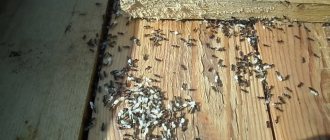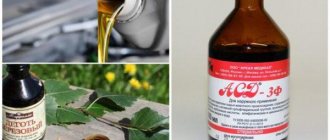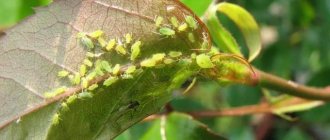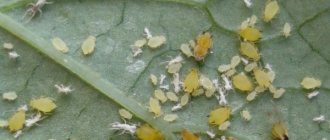Features of the fight against bedbugs using folk remedies
Folk remedies that help get rid of bedbugs have been time-tested. Some of them have proven to be quite effective, others are less effective.
Professional exterminators believe that the use of traditional methods to combat bedbugs is entertainment for the thrifty, and can only be used in cases where there are not very many insects. If the colony of bedbugs is extensive, then it is better to use folk remedies in combination with specialized drugs.
Folk remedies have a deterrent effect. Insects will not die from their influence, but will leave their habitats.
Folk remedies are not as effective as specialized ones, but they can rid a room of a small accumulation of bedbugs
The advantages of using folk remedies include:
- Cheapness. The components for preparing traditional medicines are inexpensive.
- Safety of most folk remedies. Since there are no toxic substances in the composition, the products are safe for people and animals. They can even be used in apartments where children live.
- It is not necessary to leave the premises after treatment.
- In most cases, bedbugs do not get used to folk remedies, which means treatment can be carried out several times with the same substance.
Folk remedies have the following disadvantages:
- Not effective against insect larvae.
- They don't kill bedbugs, they just repel them.
- Difficulty of processing. Folk remedies must be carefully applied to possible habitats of bedbugs.
- Short-term impact effect.
- There is a chance that the parasites will return after the substance wears off.
Video: where do bedbugs live and why are they dangerous?
Classification of methods
The fight against blood-sucking creatures has been going on since ancient times. Since then, folk remedies have remained virtually unchanged and are passed on from generation to generation.
- Mechanical method - based on the use of a vacuum cleaner and thorough cleaning.
- The temperature method of disposal is freezing, using steam and boiling water.
- Chemical - using a product with a strong odor.
- Vegetable – the use of certain plants.
I would like to note that quick results can be achieved only with the integrated use of all components of the classification. Efficiency will largely depend on human effort. You should not count on a one-time operation to destroy bedbugs. At home you will have to do this for 1 month. In addition, you must initially determine the location of the nest and try to find out the cause of the infection. If creatures from neighbors appear in the apartment, the fight must be waged together. Otherwise there will be no lasting effect.
Folk remedies for removing bedbugs
All folk remedies can be divided into four classes:
- natural - made from plants with a pungent odor;
- chemical - they are a solution with a strong odor;
- thermal - the use of high or low temperature to get rid of parasites;
- mechanical - involve getting rid of objects in which parasites live, as well as exterminating insects using a vacuum cleaner, slippers, etc.
At home, you can use a vacuum cleaner against bedbugs, but this method is ineffective
Exposure to insects by mechanical means is an unsuccessful exercise. Bedbugs reproduce quickly; it is simply impossible to get rid of all the bugs using a vacuum cleaner or a slipper.
Vinegar
Vinegar is one of the most popular drugs for getting rid of bloodsuckers. It is inexpensive, safe for health and is always available in any kitchen.
Vinegar only repels insects, but does not kill them.
To achieve good results, vinegar must be carefully applied to all cracks and surfaces where bedbugs accumulate. This process is quite labor-intensive and lengthy.
Vinegar has a repellent property - this acid can kill a bug only if it gets directly into the jar
The product can be used in its pure form. 9% vinegar is suitable for this: it is safe for humans. The processing process is as follows:
- Do a general cleaning of the room: wash the floors, dust all pieces of furniture, shake out pillows, bedspreads, blankets, vacuum carpets and upholstered furniture.
- Remove bedding and wash it in hot water.
- Remove pets and children from the premises during treatment. Vinegar has a pungent odor, the strong concentration of which can make you dizzy.
- Wear a respirator or gauze bandage.
- Apply vinegar thoroughly to the sleeping areas, treat the gaps between the bed parts, and lubricate the legs and base. Spray it onto the mattress from a spray bottle.
- Move furniture away from the walls and treat the backs of cabinets, chests of drawers, etc.
- Also lubricate the back walls of paintings and wall clocks with vinegar.
- Ventilate the apartment for two hours.
- After two hours, wet clean the areas that households and pets will come into contact with.
- After wet cleaning, you can move the residents back.
Mixtures of vinegar and chemicals have proven themselves to be effective:
- Vinegar + 90 percent alcohol + naphthalene. When using this recipe, you need to know exactly where the bedbug nest is: Wear a respirator and protective gloves.
- Mix the ingredients in equal proportions.
- Pour the mixture into a spray bottle and apply it to the areas where bedbugs live. The solution acts like a commercial aerosol: when it hits an insect, it kills it. The mixture must be applied to the accumulation of parasites, this is the only way it will kill the insects, and death will occur within two minutes.
- Ventilate the room for two hours.
- Carry out wet cleaning of the areas where the product was applied.
Ethyl alcohol can be purchased at a pharmacy
A decoction of wormwood is prepared from a dry or fresh plant: add water and boil for 15 minutes, then cool and strain
Turpentine
Turpentine is made from the resins of coniferous trees. It ignites easily and has an unpleasant odor that takes a long time to dissipate. There are precautions when working with turpentine-based products:
- Treat the apartment with turpentine-based mixtures, wearing protective gloves, a respirator and goggles.
- If turpentine gets on the surface of the skin, wash it off immediately with soap and water.
- The mixture, which includes turpentine, cannot be applied to upholstered furniture, clothing, carpets, etc., as it leaves traces that are almost impossible to get rid of.
- Turpentine is toxic and if it enters the stomach it can be fatal.
Turpentine is a clear, flammable liquid resulting from the processing of coniferous tree resins, and the essential oils it contains are unpleasant to bedbugs
Due to its low toxicity, it is necessary to use turpentine-based preparations in protective equipment. And the unpleasant smell and the likelihood of traces appearing in places where the mixture was splashed are the disadvantages of this folk remedy.
A solution is prepared from turpentine according to one of the following recipes:
- 10 ml turpentine + 15 ml kerosene + 40 g green soap + 100 ml boiling water;
Green soap is sold in hardware stores and garden departments. - 100 ml of turpentine + 100 ml of kerosene + 25 g of naphthalene;
Naphthalene is available in tablet form - 40 ml of turpentine + 100 ml of phenol (carbolic acid) + 5 g of salicylic acid;
Salicylic acid is sold at the pharmacy - 500 ml of turpentine + 250 ml of kerosene + 100 ml of denatured alcohol or other type of alcohol + 100 ml of water + 50 g of naphthalene;
- 150 ml of turpentine + 50 g of ammonia + 50 g of laundry soap.
Laundry soap is available in every home
Having chosen a recipe and prepared a mixture based on turpentine, proceed to preparing the room and its immediate processing:
- Move furniture away from the walls, remove bedding and wash in hot water. Vacuum upholstered furniture and carpets. If possible, expose carpets to sunlight for a long time (bugs cannot tolerate bright light).
- Carry out wet cleaning in the apartment.
- At the time of treatment, children and pets should not be in the room.
- Wear protective equipment.
- Pour the prepared mixture into a spray bottle.
- Treat all hard-to-reach places, apply the product to the back surfaces of cabinets, pictures, bottom walls of furniture, etc. When spraying the mixture on upholstered furniture, it will leave marks on it that are almost impossible to get rid of. Therefore, treat only the insides and back walls of chairs and sofas.
- After treatment, leave the room for 24 hours.
- After a day, come back and ventilate the apartment for 2-3 hours.
- After airing, clean up: wash the areas where the solution was applied with soap and water.
- After five days, repeat the treatment.
Video: testing turpentine to get rid of bedbugs
Kerosene
Kerosene has an unpleasant odor and is highly flammable. It began to be used to get rid of bedbugs back in the 19th century. It affects the bug through the respiratory system, penetrating it and blocking the insect’s ability to receive air. The smell of kerosene is also unpleasant for parasites, from which they lose orientation in space, as a result of which they try to leave the room as soon as possible.
Kerosene can be used in its pure form or a mixture of the following substances can be prepared from it:
- 100 ml kerosene;
- 5 g naphthalene;
- 50 ml creosol.
The resulting solution is used to treat the habitats of parasites. You will have to apply the product every month until the bedbugs disappear from the apartment. After each treatment, you need to close windows and doors tightly and leave the room for 2-3 hours, then ventilate it.
Kerosene is one of the popular pest repellents that is widely used in everyday life.
Precautions when working with kerosene and mixtures based on it:
- Treat your apartment with mixtures containing kerosene only while wearing protective equipment: gloves, a respirator and goggles. Also choose clothes with long sleeves.
- Since kerosene is highly flammable, do not smoke, light matches or candles, or open the gas during processing.
- If the substance gets into your eyes, rinse them thoroughly with water.
- If you accidentally swallow kerosene, induce vomiting and seek medical help.
- Carry out processing with the windows open. If you feel dizzy, immediately get into fresh air.
Boric acid
Boric acid is odorless and not dangerous to humans, but it is a strong poison for bedbugs. The drug is sold in powder form and used in dry form. The product is scattered around the perimeter of the room, as well as around the habitats of the bedbug colony. For the acid to begin to act, it must get on the insect's body.
Sprinkle boric acid in areas out of the reach of children and pets. Make sure that they do not accidentally put this substance into their mouth.
There is no point in mixing boric acid with water or making edible bedbug baits based on it. These insects do not eat it like cockroaches, for example.
Boric acid is sold in liquid and powder form; to combat bedbugs, you should purchase the second option
Camphor oil
Camphor oil is used in combination with turpentine ointment. The mixture is safe. To prepare the product, you need to mix a bottle of oil with a tube of turpentine ointment. Then coat the legs of furniture, frames of sofas, beds, cabinets, etc. with the resulting composition, apply the product to the bottom of the mattresses and to the base of the bed.
Camphor oil is sold in any pharmacy
The mixture has a strong odor that lasts in the room for several days. Therefore, after treatment, open the windows and leave your home for 24–48 hours.
The disadvantage of products containing turpentine ointment is the strong odor, which will linger in the room for many days and will require careful ventilation of the room
Wormwood and tansy
The use of herbs is more suitable for preventing the appearance of bedbugs. However, if you are against chemicals, try getting rid of parasites with wormwood, tansy or chamomile.
Herbs repel insects, but only for a short time.
Wormwood has a pungent odor. Its branches are laid out in closets, behind radiators, under the bed, in ventilation openings. This plant will not get rid of bedbugs forever, but it will help protect against bites.
Bedbugs cannot stand the smell of wormwood and leave areas treated with this herb
There are also recipes based on wormwood:
- Infusion. You will need 200 g of dry plant and 1 liter of alcohol. Pour alcohol over the wormwood, close the lid and place in a dark place for 25–30 days. Then pour the liquid into a spray bottle and apply every seven days to all surfaces of the room.
- Decoction. Pour water over the dry or fresh plant and boil for a quarter of an hour. Then cool and strain. It is used in the same way as the infusion, but more often (every three days).
- Oil. Pour vegetable oil over the fresh branches of the plant, close the container and leave for 14 days. Use the resulting oil to lubricate the surfaces of furniture, walls, and floors.
Vegetable oil can be found in the kitchen of any home.
Tansy will repel not only bedbugs, but also other insects. Its flowers are used:
- in dry form - spread in bedbug habitats;
- in the form of a decoction - pour 25 g of the plant into a glass of water, bring to a boil on the stove, then pour into a thermos and after 2 hours treat the furniture and all hard-to-reach places in the room with the product.
Tansy is a field plant that can be collected with your own hands in the summer.
The smell of tansy is dangerous for children and pets, so when using the plant, ventilate the room often.
Chamomile also repels insects. Flowers are placed in places where insects are located. This plant is absolutely safe for adults, children and pets.
Chamomile is safe for pets and humans
Essential oils
Essential oils that have a pungent odor can repel bedbugs. These include:
- tea tree oil;
- eucalyptus oil;
- lavender oil;
- peppermint oil;
- thyme oil;
- clove oil;
- oil of lavender, cloves, rosemary, geranium, wormwood;
- orange oil.
Essential oils have a smell that is pleasant to humans, but which bedbugs cannot stand.
Fighting parasites with the help of essential oils is one of the most expensive of all folk methods. Oils are not cheap, and a large amount of money is required. However, they have a pleasant smell to humans, which can be considered an advantage. When choosing oil, take into account possible allergic reactions among apartment residents.
This method will not rid the room of bedbugs. They will disappear only for a few days, and then they may return again. Therefore, for greater effectiveness, oils should be applied once every three to four days or used as a temporary measure until the exterminators arrive.
Tea tree oil is a very effective remedy in the fight against bedbugs; it has a repellent effect, causing bedbugs to leave their habitable places
Essential oils are used in their pure form or mixtures are prepared from them. Use undiluted oil to lubricate bed legs, frames, and the inside of mattresses.
Lavender oil can be rubbed into the skin to rid yourself of bedbug attacks.
The mixture is used as follows:
- Mix 20 drops of oil and 0.5 liters of water.
- The mixture is poured into a spray bottle.
- The product is sprayed on the surface of furniture, in crevices of floors and walls, on baseboards, back walls of furniture and other habitats of bedbugs.
Treatment with essential oils is recommended in all places where bedbugs may live, at least twice a day.
Photo gallery: other folk remedies for bedbugs
Copper sulfate is diluted with water to spray all bedbug breeding grounds in the house
You can fight adult parasites and bedbug larvae using pure denatured alcohol: just pour it on the insects
Bed bugs really don’t like the smell of ammonia: pour it into saucers, and then place them near places where insects gather
Temperature changes - frost or hot air - are good bedbug repellers: maintain temperatures below 20 degrees or above 40 for several days
A folk remedy for bedbugs is often used, such as a mixture of salt water, alcohol and peroxide: the solution is used to treat places where insects accumulate
A solution is prepared from aviation oil (20 g per bucket of water), which is used to spray the apartment, paying special attention to insect nests
Valerian tincture will help drive uninvited guests out of the house if you thickly cover the places where bedbugs live and the area around them with it, leaving the remedy for a day
Temperature control method
Bedbugs can live in an apartment at any time of the year. Freezing and heating are considered true folk remedies. At home, use depends on the weather outside the window.
Freezing
The temperature outside should not be higher than -10 degrees Celsius. Because it should be about -5 in the room. You should first take care of indoor plants - wrap them up and give them to neighbors for a while. Take it to the landing. Wrap up batteries and household appliances. Open windows and doors and leave for at least 2 hours. The sofa or contaminated items can be taken outside and left to freeze for a day. The method is effective, but causes a lot of inconvenience and allows you to doubt its effectiveness. You can damage household appliances or be left without heating, and the insects will crawl into a secluded warm place and wait for the torture to end.
Warming up
The temperature in the apartment can be increased to 35 - 40 degrees Celsius using heaters or air conditioners. Bedding is washed at temperatures above 65 degrees. Or they simply boil it. Carpet runners are doused with boiling water. In the summer, things, mattresses, pillows are taken outside into the scorching rays of the sun. Craftsmen came up with the idea of parking a car in the sun when it’s +30 outside, placing contaminated things there and leaving them there for a while. Inside the car, +45 degrees Celsius and above are created.
A steam generator is considered a folk remedy. This appliance produces steam. To kill bedbugs, it is enough to set it to 80 degrees. Continuous exposure to one point for 30 seconds leads to the death of adults, larvae and eggs. No other remedy gives such a result. The procedure will have to be repeated if live parasites appear. Usually 2 times is enough.
Safety rules and precautions
Most folk remedies are safe and do not require any precautions. But there are drugs that require protective equipment to work with—gloves, a respirator, and goggles. These include kerosene and turpentine. After treating the room with these substances, it is necessary to ventilate it well and leave it for several days. It is important to protect children and pets from contact with drugs. This rule also applies to boric acid.
Treating a room against bedbugs is carried out wearing goggles, a respirator and gloves with the windows and doors open
If any of these substances come into contact with your eyes, nose or mouth, rinse them with plenty of warm water. If it gets into the stomach, induce vomiting, drink activated charcoal and consult a doctor.
Turn off the gas and fireplace, do not light candles or matches, do not smoke when treating with kerosene or turpentine. The substances are highly flammable, and not only the bug, but also the person can lose their home.
Preventing the appearance of bedbugs in the apartment
The appearance of bedbugs in the house can be avoided if you adhere to the following recommendations:
- Don't buy furniture that has been used by other people.
- Change bed linen at least twice a month.
Regularly changing bed linen will be a good prevention of the appearance of not only bedbugs, but also other harmful insects - Wash items that have been sitting in the closet for a long time, even if you don't wear them.
- Be careful when visiting other people's houses, hotels, hotels and hostels. Bed bugs can travel on clothes and bags.
- Do not store unnecessary things in your apartment - favorite habitats for bedbugs.
A balcony littered with unnecessary things can become a haven for bedbugs - If you find bedbugs in upholstered furniture, it is better to get rid of it immediately.
- Bedbugs often move from one apartment to another through cracks in walls, floors and ventilation openings. To prevent this from happening, seal all cracks with sealant and install nets on grilles and windows.
- After your pets visit the street, inspect them and wash them with shampoo. Animals also carry bedbugs on their fur.
When you return from a walk, inspect your pet's fur for bedbugs.
Following simple rules will help you avoid becoming the owner of such a nuisance in your apartment as bedbugs.











